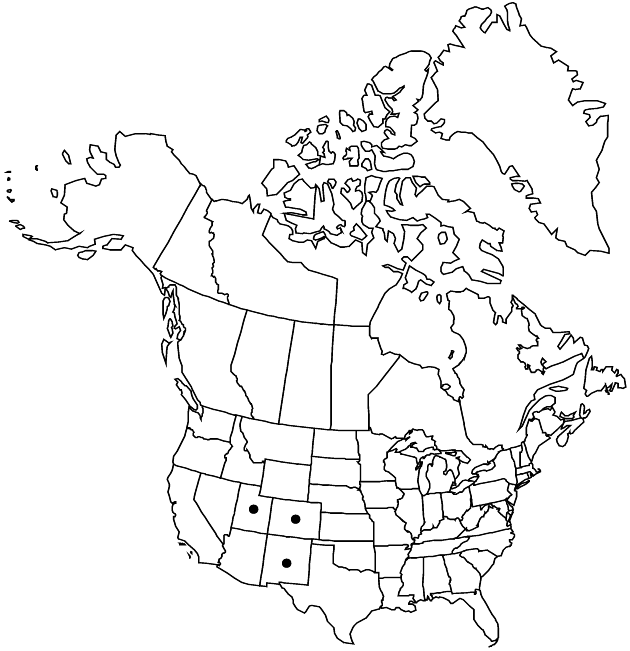Difference between revisions of "Senecio pudicus"
Pittonia 4: 118. 1900.
Endemic
Basionym: Senecio cernuus A. Gray Amer. J. Sci. Arts, ser. 2, 33: 239. 1862,
Synonyms: Ligularia pudica (Greene) W. A. Weber
imported>Volume Importer |
imported>Volume Importer |
||
| Line 59: | Line 59: | ||
|publication year=1900 | |publication year=1900 | ||
|special status=Endemic | |special status=Endemic | ||
| − | |source xml=https:// | + | |source xml=https://bitbucket.org/aafc-mbb/fna-data-curation/src/2e0870ddd59836b60bcf96646a41e87ea5a5943a/coarse_grained_fna_xml/V19-20-21/V20_1208.xml |
|tribe=Asteraceae tribe Senecioneae | |tribe=Asteraceae tribe Senecioneae | ||
|genus=Senecio | |genus=Senecio | ||
Latest revision as of 20:59, 5 November 2020
Perennials or biennials (possibly winter annuals), 50–80 cm (caudices fibrous-rooted). Herbage glabrous. Stems usually single, sometimes loosely clustered. Leaves progressively reduced distally; petiolate; blades narrowly lanceolate to oblanceolate, 8–15(–20+) × (0.5–)1–3(–4) cm, bases tapered, margins entire or dentate (mid and distal leaves sessile, bractlike). Heads nodding, (3–)8–16(–40+) in racemiform or paniculiform arrays. Calyculi of 2–6 lance-linear bractlets. Phyllaries usually ± 13, rarely ± 8, 5–9 mm, tips green. Ray florets 0. Cypselae glabrous.
Phenology: Flowering summer–early autumn.
Habitat: Rocky, damp or drying hillsides, often coniferous and aspen woodlands
Elevation: 2400–3800 m
Distribution

Colo., N.Mex., Utah.
Discussion
Selected References
None.
Lower Taxa
None.